Abstract
The mycelia of Neurospora crassa grown in the presence of high concentrations of copper were blue in color, but only on a medium containing inorganic nitrate and phosphate as the nitrogen and phosphate sources, respectively. The cell wall isolate of the blue mycelia contained large amounts (12%) of copper and higher amounts of chitosan, phosphate, and amino groups, with a 42% decrease in the chitin content. Although all the glucosamine of the cell wall of control cultures could be released within 6 h of hydrolysis with acid, that of the blue mycelium required prolonged hydrolysis for 24 h. On removal of copper, the cell wall of the blue mycelium could quantitatively bind again to copper as well as to zinc. Although zinc binding was fivefold greater, copper alone was preferentially bound from a mixture of the two metal ions. Supplementation of iron along with copper in the culture medium resulted in the disappearance of the blue color of the mycelium and restoration of normal growth and composition of the cell wall, probably by limiting the uptake of copper from the medium. The possibility of the cell wall being a specific site of lesion in copper toxicity in the mold is discussed.
Full text
PDF
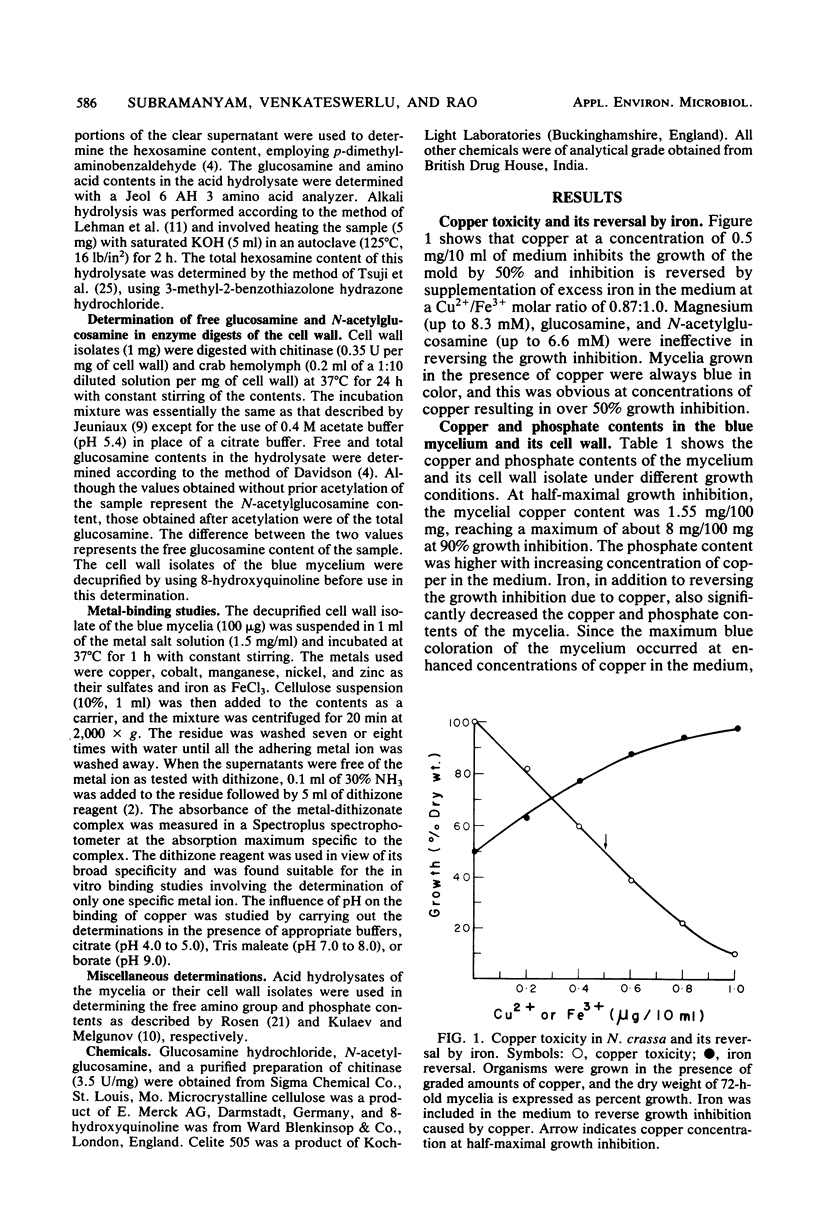
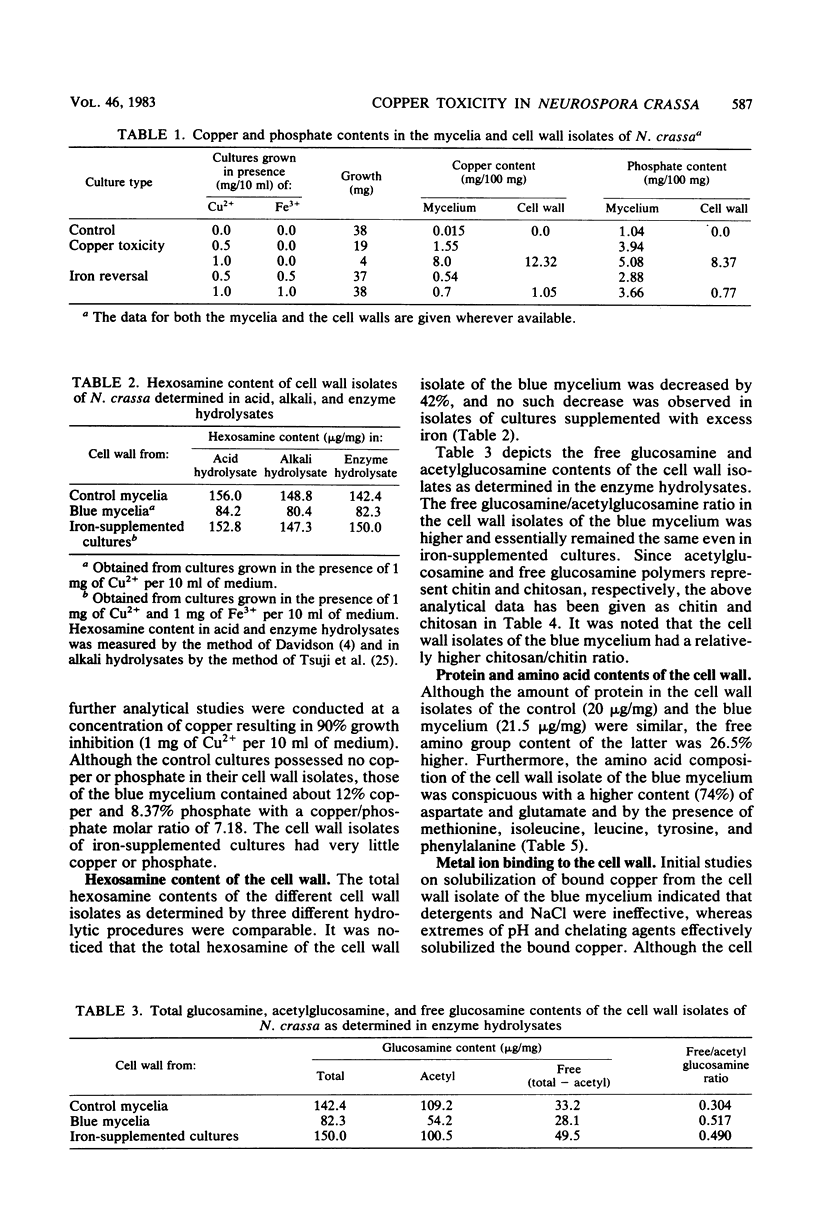
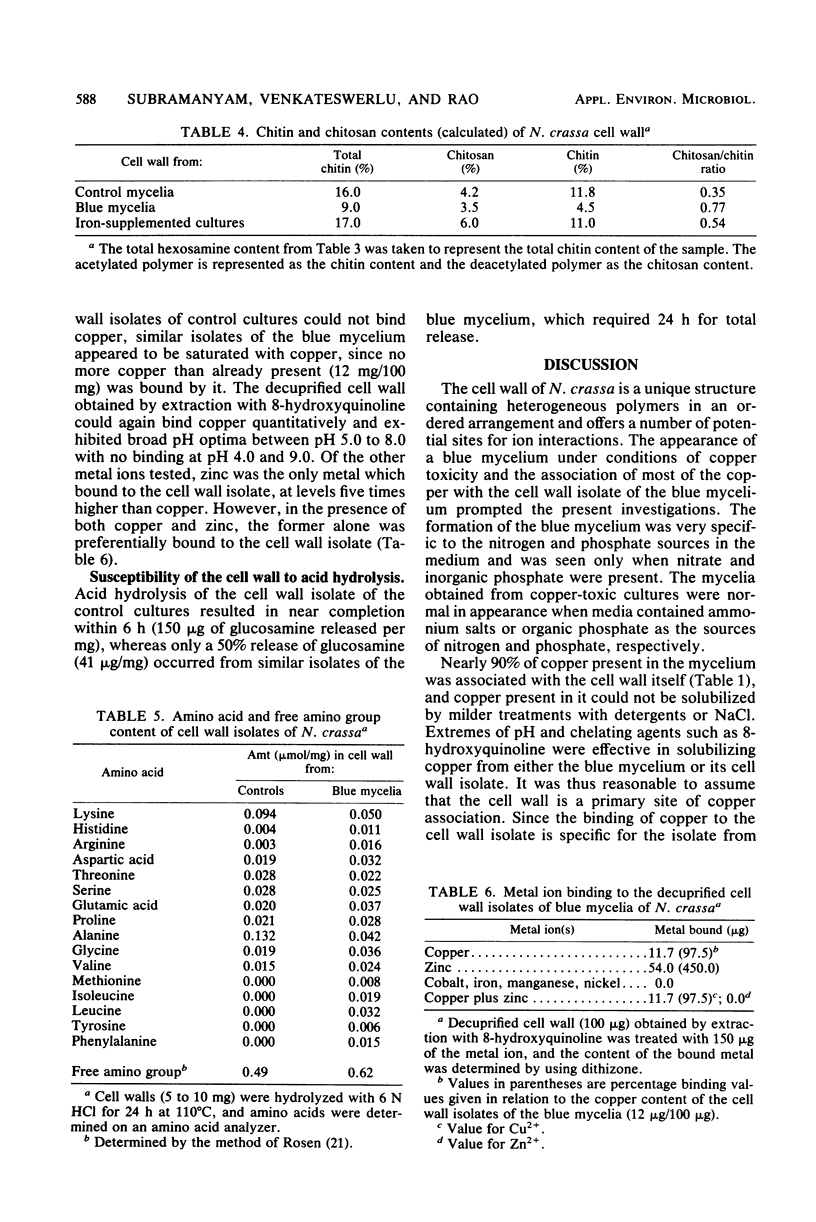
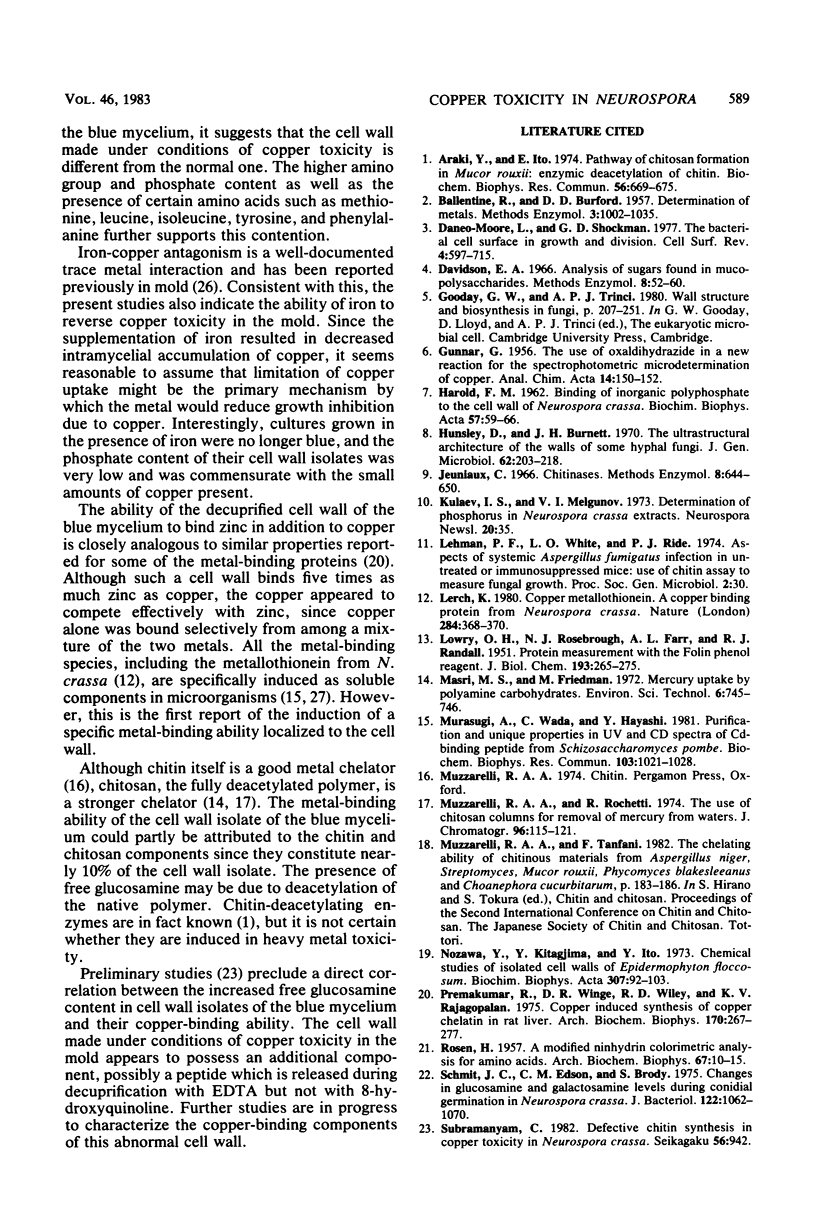
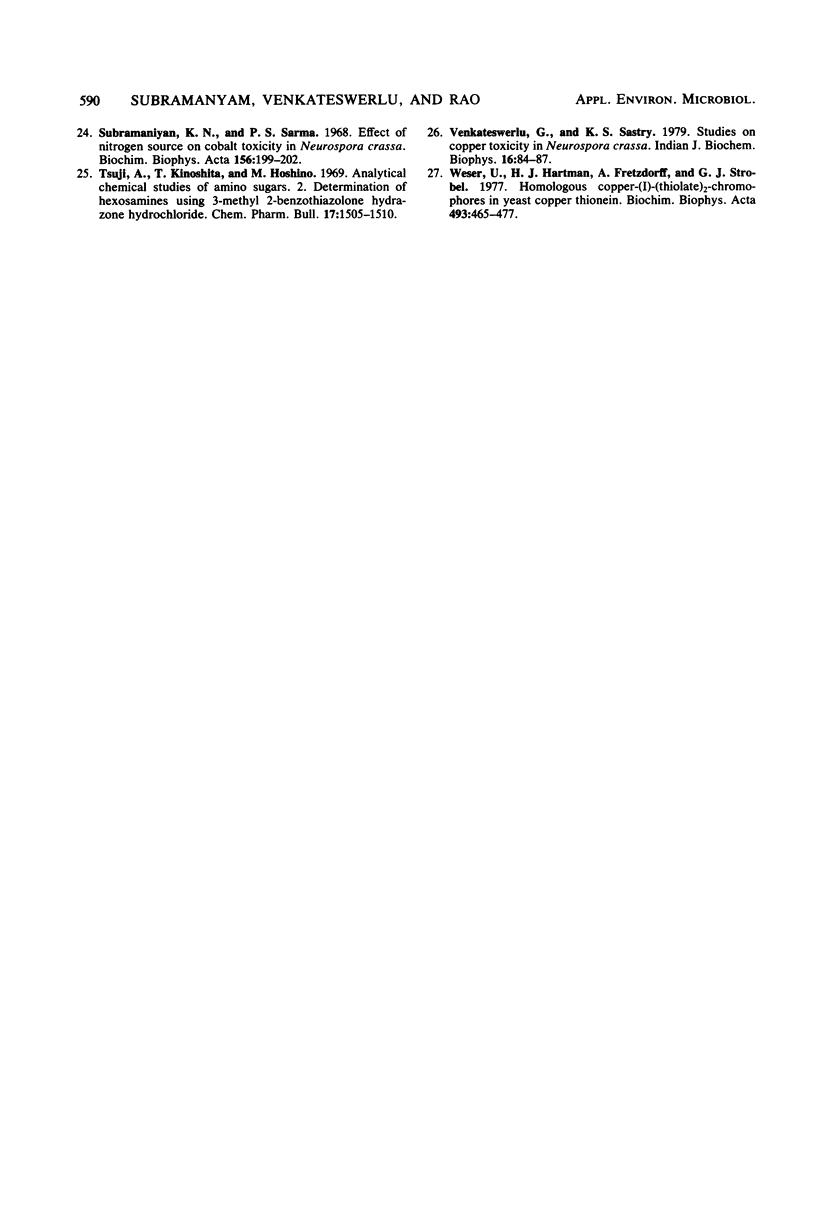
Selected References
These references are in PubMed. This may not be the complete list of references from this article.
- Araki Y., Ito E. A pathway of chitosan formation in Mucor rouxii: enzymatic deacetylation of chitin. Biochem Biophys Res Commun. 1974 Feb 4;56(3):669–675. doi: 10.1016/0006-291x(74)90657-3. [DOI] [PubMed] [Google Scholar]
- HAROLD F. M. Binding of inorganic polyphosphate to the cell wall of Neurospora crassa. Biochim Biophys Acta. 1962 Feb 12;57:59–66. doi: 10.1016/0006-3002(62)91077-6. [DOI] [PubMed] [Google Scholar]
- LOWRY O. H., ROSEBROUGH N. J., FARR A. L., RANDALL R. J. Protein measurement with the Folin phenol reagent. J Biol Chem. 1951 Nov;193(1):265–275. [PubMed] [Google Scholar]
- Lerch K. Copper metallothionein, a copper-binding protein from Neurospora crassa. Nature. 1980 Mar 27;284(5754):368–370. doi: 10.1038/284368a0. [DOI] [PubMed] [Google Scholar]
- Murasugi A., Wada C., Hayashi Y. Purification and unique properties in UV and CD spectra of Cd-binding peptide 1 from Schizosaccharomyces pombe. Biochem Biophys Res Commun. 1981 Dec 15;103(3):1021–1028. doi: 10.1016/0006-291x(81)90911-6. [DOI] [PubMed] [Google Scholar]
- Muzzarelli R. A., Rocchetti R. The use of chitosan columns for the removal of mercury from waters. J Chromatogr. 1974 Aug 28;96(1):115–121. doi: 10.1016/s0021-9673(01)81223-1. [DOI] [PubMed] [Google Scholar]
- Nozawa Y., Kitajima Y., Ito Y. Chemical and ultrastructural studies of isolated cell walls of Epidermophyt on floccosum. Presence of chitin inferred from X-ray diffraction analysis and electron microscopy. Biochim Biophys Acta. 1973 Apr 25;307(1):92–103. doi: 10.1016/0005-2736(73)90028-x. [DOI] [PubMed] [Google Scholar]
- Premakumar R., Winge D. R., Wiley R. D., Rajagopalan K. V. Copper-induced synthesis of copper-chelatin in rat liver. Arch Biochem Biophys. 1975 Sep;170(1):267–277. doi: 10.1016/0003-9861(75)90117-4. [DOI] [PubMed] [Google Scholar]
- ROSEN H. A modified ninhydrin colorimetric analysis for amino acids. Arch Biochem Biophys. 1957 Mar;67(1):10–15. doi: 10.1016/0003-9861(57)90241-2. [DOI] [PubMed] [Google Scholar]
- Schmit J. C., Edson C. M., Brody S. Changes in glucosamine and galactosamine levels during conidial germination in Neurospora crassa. J Bacteriol. 1975 Jun;122(3):1062–1070. doi: 10.1128/jb.122.3.1062-1070.1975. [DOI] [PMC free article] [PubMed] [Google Scholar]
- Subramanian K. N., Sarma P. S. Effect of nitrogen source of cobalt toxicity in Neurospora crassa. Biochim Biophys Acta. 1968 Feb 1;156(1):199–202. doi: 10.1016/0304-4165(68)90123-2. [DOI] [PubMed] [Google Scholar]
- Tsuji A., Kinoshita T., Hoshino M. Analytical chemical studies on amino sugars. II. Determination of hexosamines using 3-methyl-2-benzothiazolone hydrazone hydrochloride. Chem Pharm Bull (Tokyo) 1969 Jul;17(7):1505–1510. doi: 10.1248/cpb.17.1505. [DOI] [PubMed] [Google Scholar]
- Venkateswerlu G., Sastry K. S. Studies on copper toxicity in Neurospora crassa. Indian J Biochem Biophys. 1979 Apr;16(2):84–87. [PubMed] [Google Scholar]
- Weser U., Hartmann H. J., Fretzdorff A., Strobel G. J. Homologous copper(I)-(thiolate)2-chromophores in yeast copper thionein. Biochim Biophys Acta. 1977 Aug 23;493(2):465–477. doi: 10.1016/0005-2795(77)90203-3. [DOI] [PubMed] [Google Scholar]


